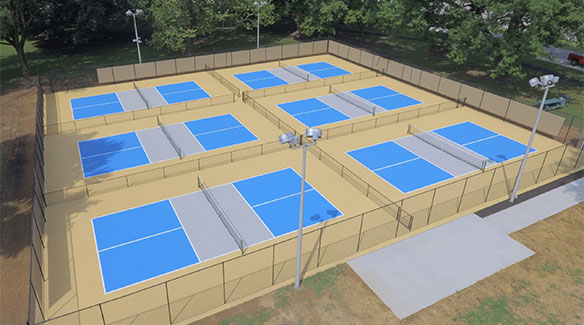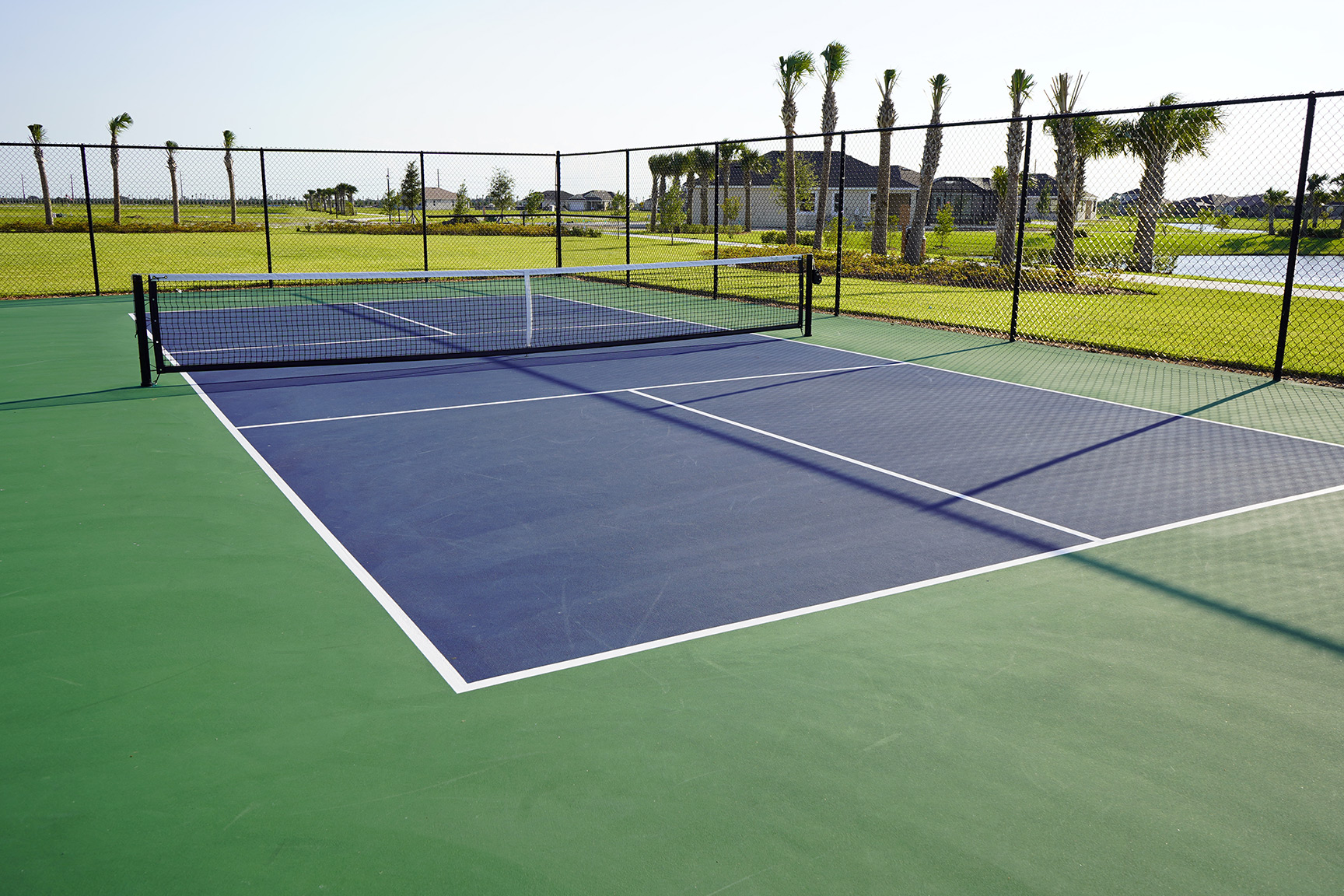How to Pick the Right Materials for Pickleball Court Construction
Boost Citizen Interaction With Community-Driven Pickleball Court Projects
The development of community-driven pickleball court projects provides an unique opportunity to promote local engagement and enhance area ties. The genuine concern remains: exactly how can these grassroots initiatives be strategically applied to make certain sustainability and inclusivity in varied areas?
Significance of Area Involvement
Area involvement is an essential aspect in the successful advancement of pickleball court tasks, as it cultivates a feeling of ownership and cumulative duty amongst citizens. When community members are proactively associated with the planning and execution stages, they are most likely to promote for the project's long-term success. Involving stakeholders such as regional gamers, families, and recreational teams ensures that the facilities fulfill the diverse requirements and choices of the area.
Furthermore, community involvement cultivates an encouraging setting where homeowners feel equipped to contribute their sources and concepts. Pickleball court construction. This joint approach can lead to cutting-edge solutions that boost the design and functionality of the courts, making them more attractive to a bigger audience. Furthermore, involving citizens in decision-making processes can reinforce social ties, advertising inclusivity and unity within the area
The visibility of neighborhood support for a pickleball task can likewise play a crucial role in securing funding and authorization from local authorities. By demonstrating a shared dedication to entertainment growth, neighborhoods can effectively advocate for sources and plan modifications that prefer the facility of pickleball courts, inevitably enhancing the neighborhood culture and leisure landscape.
Actions to Initiate a Project
Launching a pickleball court task requires a methodical strategy that develops on the structure of community engagement developed in previous discussions. The very first step is to put together a project committee making up regional stakeholders, fanatics, and reps from appropriate organizations. This diverse team ensures that multiple point of views are taken into consideration.
Next, carry out a demands analysis within the neighborhood. Studies, emphasis teams, and public meetings can be reliable in determining interest and event input on prospective court areas, preferred features, and organizing preferences. Following this, create a project strategy outlining obligations, timelines, and objectives.
When the plan remains in area, involve with regional authorities to understand zoning policies and any kind of required authorizations. Communicating transparently with the area throughout this procedure is important, as it cultivates count on and encourages additional engagement.
Furthermore, arranging community occasions can aid maintain energy and enthusiasm. These events can act as platforms for more conversation and assistance to enhance area connections. Document every action taken and preserve detailed documents, as this will be beneficial for future phases of the job, including funding and source acquisition.
Funding and Resources Available
Securing financing and sources for a pickleball court project is usually a vital action that can determine the project's expediency and success. Different opportunities exist for obtaining financial assistance, ranging from public financing to private sponsorships. City government gives, frequently aimed at promoting community health and wellness and entertainment, can give useful link significant economic support for such campaigns.
In enhancement to federal government resources, nonprofit companies and foundations often provide grants specifically for sporting activities and area growth jobs. Involving local companies as sponsors can also be a worthwhile strategy; numerous companies aspire to spend in community campaigns that improve their corporate social duty account.
Crowdfunding platforms have actually become a practical choice for grassroots fundraising, enabling area members to add directly to the job. This method not only raises funds however also cultivates a sense of ownership amongst individuals.
Layout and Preparation Factors To Consider
Reliable design and planning are fundamental elements of any type of effective pickleball court job adhering to the procurement of funding and sources. A detailed evaluation of the proposed place is essential; this consists of evaluating availability, proximity to existing area amenities, and the potential for visibility and engagement.
The format of the court must abide by main dimension specifications while taking into consideration the bordering environment. Integrating functions such as seats, shade frameworks, and proper lighting can substantially boost player experience and viewer pleasure. Materials chosen for the court surface need to prioritize durability and security, with choices like acrylic or asphalt offering optimal performance.
Entailing community members in the design procedure fosters a sense of ownership and makes sure that the center meets neighborhood requirements - Pickleball court construction. This can be accomplished via public assessments and studies, enabling stakeholders to express their choices and worries
Sustainability should additionally be a priority; incorporating environment-friendly materials and techniques can contribute to lasting stability. Lastly, creating a maintenance strategy to ensure the court remains in superb condition will certainly sustain continuous community engagement and involvement in pickleball tasks.

Success Stories and Study
Highlighting the transformative influence of community-driven campaigns, a number of success tales show exactly how collaborative initiatives have resulted in the advancement of lively pickleball courts throughout various areas. One notable instance is the initiative in a town in Florida, where citizens grouped to transform an underutilized tennis court right into a specialized pickleball facility. With fundraising events and collaborations with neighborhood businesses, the area elevated adequate funds to mount brand-new nets, resurfacing, and lines, inevitably cultivating a dynamic center for neighborhood players.
Likewise, in a suburban area of California, a grassroots motion arised to create pickleball courts in a neighborhood read here park. The task not just involved volunteers for building and construction yet also included workshops to engage area participants in the sport. Because of this, the courts ended up being a prime focus for social communication and fitness, drawing in players of all ages.
These study exemplify how community-driven projects can enhance neighborhood involvement, advertise physical activity, and strengthen social bonds. By leveraging collective sources and interest, neighborhoods can efficiently develop and maintain pickleball centers that serve varied populations and foster a feeling of belonging.

Final Thought
Finally, community-driven pickleball court tasks work as essential instruments for improving regional involvement and cultivating a feeling of belonging amongst citizens. By prioritizing stakeholder involvement throughout the preparation and implementation phases, these initiatives can effectively address diverse area demands. In addition, leveraging readily available sources and analyzing effective study can provide beneficial insights for future jobs. Inevitably, such initiatives add to the transformation of public spaces into vibrant facilities of physical fitness and social interaction, enhancing neighborhood connections.
The emergence of community-driven pickleball court projects offers a special possibility to promote neighborhood engagement and enhance neighborhood ties.Community engagement see post is an essential aspect in the effective growth of pickleball court tasks, as it fosters a feeling of possession and cumulative responsibility among residents. When area members are proactively involved in the preparation and execution phases, they are extra most likely to promote for the project's long-lasting success.Launching a pickleball court project requires a systematic approach that builds on the foundation of neighborhood engagement established in previous discussions. The task not just engaged volunteers for building however also included workshops to involve area members in the sport.